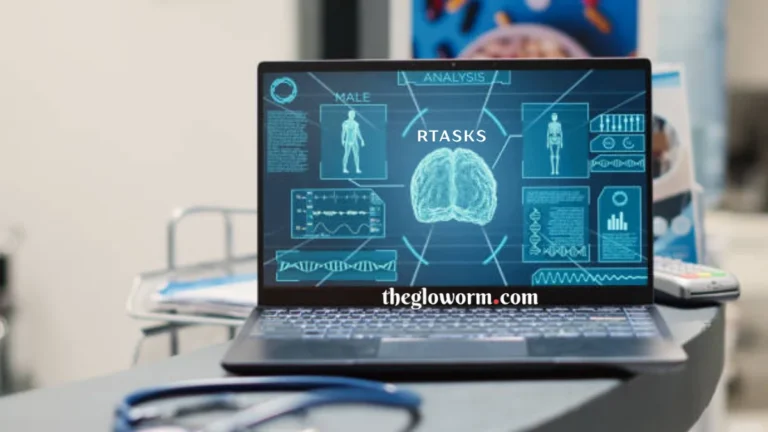Introduction to Rtasks
Deep learning is revolutionizing industries, from healthcare to finance. Yet, with this rapid growth comes a challenge: optimizing hardware utilization. Enter Rtasks a game-changer in the realm of deep learning that maximizes efficiency and performance. As organizations grapple with increasing data demands and complex models, Rtasks offers a solution that not only streamlines processes but also enhances productivity. If you’re looking to elevate your deep learning projects while making the most out of your hardware resources, understanding Rtasks might just be your next big step forward. Let’s dive into what makes this tool indispensable for today’s AI landscape!
Challenges Faced in Deep Learning Hardware Utilization
Deep learning relies heavily on computing power. However, maximizing hardware utilization remains a significant challenge.
One primary issue is resource allocation. Many tasks require different types of resources, causing inefficiencies when the system cannot match workloads to available hardware optimally. This leads to idle GPUs and wasted time.
Another hurdle is scaling. As models grow in complexity, so does the demand for processing capability. Standard setups often struggle to keep pace with these evolving needs, resulting in bottlenecks.
Data transfer rates also play a crucial role. Slow data movement can hinder performance, making it difficult for systems to operate at their full potential.
Managing multiple frameworks can complicate things further. Developers may face difficulties ensuring compatibility between various libraries and hardware configurations, which can stifle productivity and innovation in deep learning projects.
What are Rtasks?
Rtasks is an innovative framework designed to optimize hardware utilization in deep learning environments. It streamlines the process of task scheduling and resource allocation, ensuring that computational resources are used efficiently.
By breaking down complex workloads into manageable tasks, Rtasks enhances performance while minimizing idle time. This means your GPUs and CPUs are working at their full potential, which is crucial for deep learning applications.
The framework supports a variety of system architectures. Whether you’re using powerful clusters or distributed systems, Rtasks adapts seamlessly to your needs.
Moreover, it integrates well with popular machine learning libraries like TensorFlow and PyTorch. This compatibility allows developers to implement Rtasks without overhauling existing workflows.
The flexibility and efficiency offered by Rtasks make it a game-changer in maximizing hardware capabilities for deep learning projects.
Benefits of Using Rtasks in Deep Learning
Rtasks brings a fresh perspective to deep learning by optimizing hardware usage. It intelligently schedules tasks, ensuring that resources are never idle.
This leads to faster training times. With Rtasks, models learn more efficiently as GPUs and CPUs work at peak capacity. The result? Shorter development cycles and quicker iterations on experiments.
Another advantage lies in its flexibility. Rtasks can adapt to various architectures and workloads, making it suitable for diverse projects ranging from natural language processing to computer vision.
Collaboration also benefits greatly with Rtasks integration. Teams can share workloads seamlessly, enhancing productivity across the board while minimizing bottlenecks.
Cost-effectiveness cannot be overlooked. By maximizing existing hardware utilization, organizations reduce their need for additional infrastructure investments while achieving superior performance metrics in their deep learning initiatives.
Case Studies: Success Stories of Companies Using Rtasks
Several companies have harnessed the power of Rtasks to revolutionize their deep learning workflows. One notable example is a leading tech giant that streamlined its model training process. By integrating Rtasks, they achieved a remarkable 40% increase in hardware utilization.
Another success story comes from a healthcare startup focused on medical imaging. With Rtasks, they optimized GPU resources effectively, slashing processing time for their algorithms by half. This efficiency not only accelerated project timelines but also improved diagnostic accuracy.
In the finance sector, a fintech company applied Rtasks to analyze vast datasets rapidly. The platform allowed them to run multiple experiments simultaneously without overloading servers. As a result, data-driven insights emerged faster than ever before.
These case studies highlight how diverse industries are tapping into the potential of Rtasks for enhanced performance and innovation in deep learning applications.
Implementing Rtasks in Your Deep Learning Projects
Implementing Rtasks in your deep learning projects is straightforward and efficient. Start by integrating the Rtasks library into your existing framework. Most popular frameworks support easy installations, allowing you to get up and running quickly.
Next, identify tasks that can be parallelized within your model training process. This could involve data preprocessing or optimizing hyperparameters. By segmenting these tasks, Rtasks can distribute workloads across available hardware resources effectively.
Once you’ve set up task distribution, monitor performance metrics closely. Adjust parameters as needed to ensure optimal utilization of CPUs and GPUs alike.
Don’t forget to leverage real-time updates on task completion through Rtasks’ dashboard features. These insights enable agile adjustments during training cycles without halting progress.
By adopting this structured approach, teams can maximize their hardware potential while streamlining workflows significantly in the realm of deep learning applications.
Conclusion: The Future of Deep Learning and Hardware Utilization
The landscape of deep learning is evolving rapidly. As models become increasingly complex, the need for efficient hardware utilization becomes paramount. Rtasks emerges as a powerful solution to address this challenge.
By optimizing resource allocation and scheduling tasks effectively, Rtasks’s enables organizations to harness their computing power fully. This capability not only enhances model training times but also significantly reduces operational costs.
Looking ahead, the integration of tools like Rtasks’s will likely play a crucial role in how businesses approach deep learning projects. The continuous advancements in technology promise even greater efficiencies and innovations on the horizon.
As companies strive to remain competitive, embracing solutions that maximize hardware utilization will be key. The future holds exciting possibilities for those willing to leverage these advancements in their deep learning endeavors.

